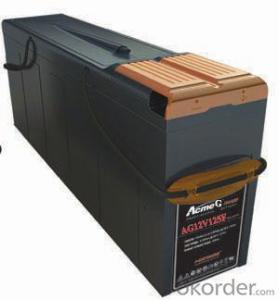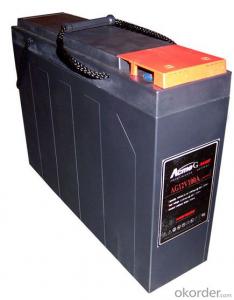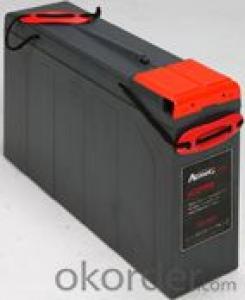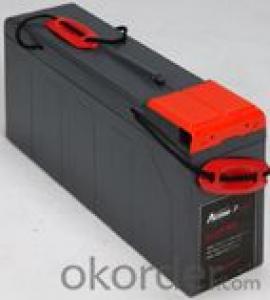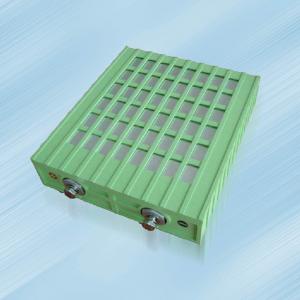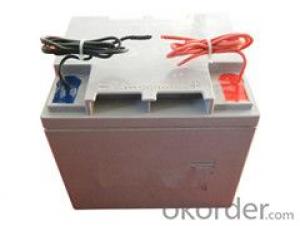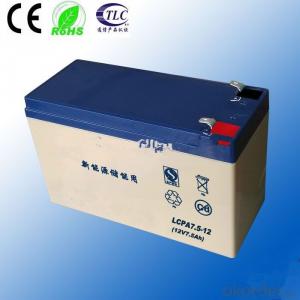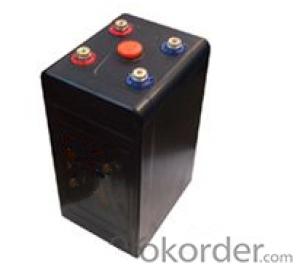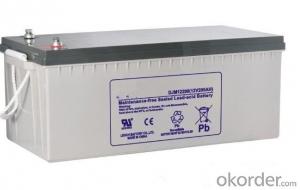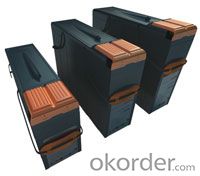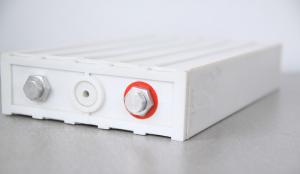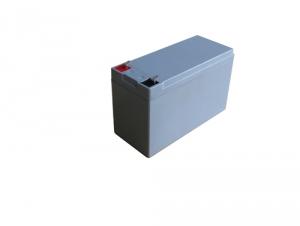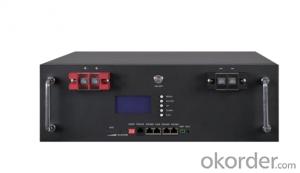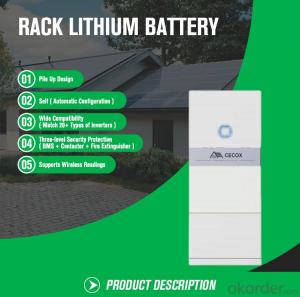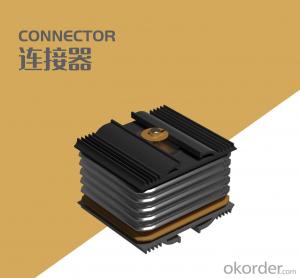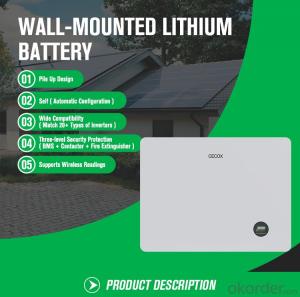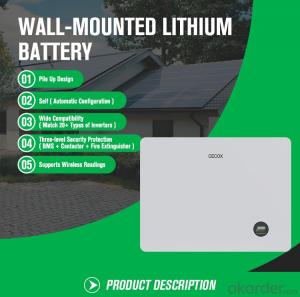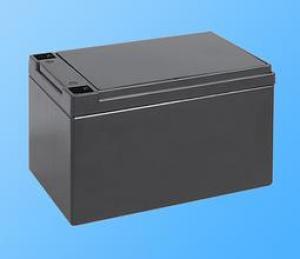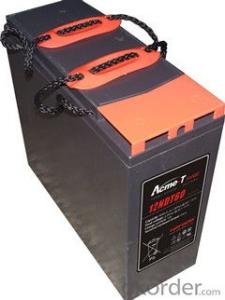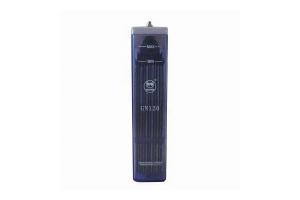Gel Battery the AcmeG Series Battery
- Loading Port:
- Shanghai
- Payment Terms:
- TT OR LC
- Min Order Qty:
- 10 unit
- Supply Capability:
- 10000 unit/month
OKorder Service Pledge
OKorder Financial Service
You Might Also Like
The AcmeG range front access gel batteries is designed based on the Acme series, using the polymer gel electrolyte with real front access structure. The state-of the-art internal and external design ensures AcmeG the high reliability and makes the installation quite simple and safe when placed on a standard relay rack tray or in a closed cabinet. AcmeG range gel battery is designed with high energy density and suitable for 19". 23" rack or cabinet.
Technical features
Long life
Using the polymer gel electrolyte
4BS paste technology
Special paste formula
Special patented grid alloyWide operational temperature range
Excellent charging and discharging ability at low temperature
Decline the water-loss at high temperaturespecial structure
real front access structure makes the installation and maintenance squite simple and safe
suitable for 19". 23" rack or cabinet
The specially centralized venting system ensures the small gas be vented our of the closed cabinet
Compliant standards
Designed to be compliant with:
IEC 60896-2
BS 6290 Part 4
Telcordia SR-4228
EUROBAT GUIDE
UL
Manufactured under system ISO9001 & ISO14001 by NARADA
Battery installation compliant with:
EN 50272-2 or local equivalents
Main applications
Telecom standby and cyclical applications
UPS
Power plant and power transfer system
Solar energy system
Emergency lighting system
Products characteristics:
float voltage: 2.25Vpc at 77oF(25oC) , Equalization charge voltage: 2.40Vpc at 77oF(25oC)
Self discharge rate: < 2% pre month at 68oF(20oC)
Design life: more than 12 years at 68oF(20oC)
Shelf life: 6 months at 68oF(20oC)
Recombination efficiency: >99%
the Pressure at which the valve opens & reclose is Opened at 10 to 35kpa(1.45psi to 5.08psi) and
closed at 3 to 15 kpa (0.44psi to 2.18psi)
Temperature ranges: -40oC to 50oC
Terminal Hardware Torque:10±0.1N m
Container Material: ABS (V0 optional)
FAQ
![]() What is a Gel Cell Battery?
What is a Gel Cell Battery?
A gel battery design is typically a modification of the standard lead acid automotive or marine battery. A gelling agent is added to the electrolyte to reduce movement inside the battery case. Many gel batteries also use one way valves in place of open vents, this helps the normal internal gasses to recombine back into water in the battery, reducing gassing. "Gel Cell" batteries are non-spillable even if they are broken. Gel cells must be charged at a lower voltage (C/20) than flooded or AGM to prevent excess gas from damaging the cells. Fast charging them on a conventional automotive charger may be permanently damage a Gel Battery.
![]() What is sulfation of batteries?
What is sulfation of batteries?
Sulfation is the formation or deposit of lead sulfate on the surface and in the pores of the active material of the batteries' lead plates. If the sulfation becomes excessive and forms large crystals on the plates, the battery will not operate efficiently and may not work at all. Common causes of battery sulfation are standing a long time in a discharged condition, operating at excessive temperatures, and prolonged under or over charging.
![]() How long a battery can last?
How long a battery can last?
The service design life of a battery are vary considerably with how it is used, how it is maintained and charged, temperature, and other factors.
![]() Do batteries self-discharge when not in use?
Do batteries self-discharge when not in use?
All batteries, regardless of their chemistry, self-discharge. The rate of self-discharge depends both on the type of battery and the storage temperature the batteries are exposed to. However, for a good estimate, Narada batteries self-discharge approximately 4% per week at 80ĄăF.
- Q:What is a maintenanceable battery?
- It also has a shock, high temperature, small size, self-discharge characteristics. Life is generally twice the ordinary battery.
- Q:Battery 200ah / 104 what does that mean?
- 2V battery capacity (from 200AH-3000AH have) long design, good stability, the price is also expensive; 12V battery capacity is generally the largest 250AH, design life as 2V, price economy, high current discharge better.
- Q:How does battery activation work?
- If the battery is charged, because the battery discharge itself, the active substance to activate, not add acid, but should be added pure water (no minerals and impurities in the water) is best steaming water, and now you Since the addition, you can use water to wash several times, and then use 1C current charge to 2.3 times. Then discharge, so repeated several times, will be better. So that you can remove the vulcanization.
- Q:What is the difference between a maintenance-free battery and a conventional battery?
- Lead-acid battery is composed of positive and negative plates, partitions, shell, electrolyte and wiring pile head and other components, the discharge of the chemical reaction is to rely on positive electrode active substances (lead dioxide and lead) and negative plate active substances (sponge Pure lead) in the electrolyte (dilute sulfuric acid solution) under the action, which plate grid, the traditional battery lead and antimony alloy manufacturing, maintenance-free battery is made of lead calcium alloy, the former with antimony, the latter with calcium, This is the fundamental difference between the two points.
- Q:How does the battery increase the voltage?
- Chemical energy can be converted into electrical energy device called chemical battery, generally referred to as the battery. After discharge, the internal active material can be regenerated by charging - the electrical energy stored as chemical energy; chemical energy can be converted to electrical energy again when the discharge is required. This type of battery is called a battery (Storage Battery), also known as secondary battery.
- Q:How to repair the battery?
- Pry open the adhesive or heat-sealed battery cover, reveal the maintenance-free battery rubber exhaust valve, carefully remove the exhaust valve, save, observe the battery internal situation. Add 0.1% to 0.5% of the electrolyte to the battery, just to the battery above the flow of electrolyte. At the same time, check whether the black impurities, if there are obvious black turbid impurities, indicating that the battery plate has been significantly softened, the possibility of battery repair is relatively small. If there is no black muddy impurities, need to wait 4 hours later, the water fully into the battery. If it is only because the deactivation time is long and cause the battery capacity to decline, do not need to carry out this step operation, should go directly to step 3 pre-charge.
- Q:What are the hazards of battery over discharge?
- The battery discharge to the standard termination voltage when the internal resistance will become larger, the battery electrolyte concentration will become very thin, especially the battery plate micropores and battery plate surface these two points are almost neutral; battery over discharge because of Internal resistance will become larger, so the battery will appear inside the phenomenon of heat, the battery volume will appear fever expansion.
- Q:What kind of battery is divided into?
- At present, we used the car battery is divided into three categories, namely, ordinary batteries, dry batteries and maintenance-free batteries three.
- Q:Lead-acid battery how to maintain?
- After 5 hours of repair, the excess electrolyte is sucked out with a straw, and if the electrolyte is sucked out into black, it indicates that the battery is severely grounded and that the battery is difficult to repair.
- Q:What battery does the van use?
- General use of lead-acid batteries. Electrode is mainly made of lead and its oxide, the electrolyte is a sulfuric acid solution of a battery. English: Lead-acid battery Discharge state, the main component of the cathode is lead dioxide, the main component of the negative lead; charge state, the main components of the positive and negative are lead sulfate. Divided into exhausted batteries and maintenance-free lead-acid batteries.
1. Manufacturer Overview |
|
|---|---|
| Location | |
| Year Established | |
| Annual Output Value | |
| Main Markets | |
| Company Certifications | |
2. Manufacturer Certificates |
|
|---|---|
| a) Certification Name | |
| Range | |
| Reference | |
| Validity Period | |
3. Manufacturer Capability |
|
|---|---|
| a)Trade Capacity | |
| Nearest Port | |
| Export Percentage | |
| No.of Employees in Trade Department | |
| Language Spoken: | |
| b)Factory Information | |
| Factory Size: | |
| No. of Production Lines | |
| Contract Manufacturing | |
| Product Price Range | |
Send your message to us
Gel Battery the AcmeG Series Battery
- Loading Port:
- Shanghai
- Payment Terms:
- TT OR LC
- Min Order Qty:
- 10 unit
- Supply Capability:
- 10000 unit/month
OKorder Service Pledge
OKorder Financial Service
Similar products
New products
Hot products
Hot Searches
Related keywords
